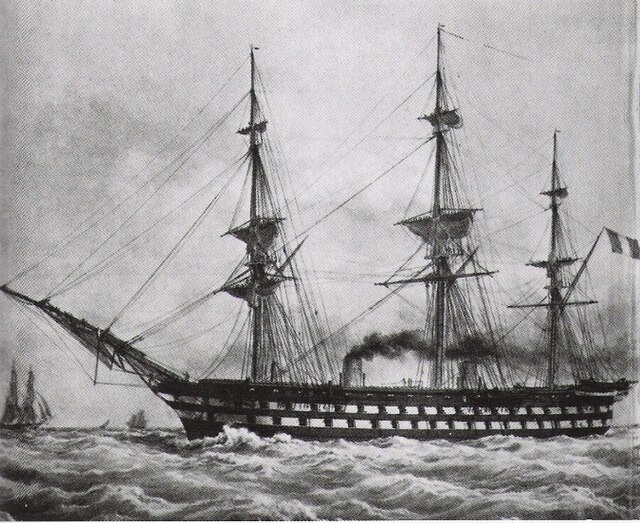The Warrior-class ironclads were a class of two warships built for the Royal Navy between 1859 and 1862, the first ocean-going ironclads with iron hulls ever constructed. The ships were designed as armoured frigates in response to an invasion scare sparked by the launch of the French ironclad Gloire and her three sisters in 1858. They were initially armed with a mix of rifled breech-loading and muzzle-loading smoothbore guns, but the Armstrong breech-loading guns proved unreliable and were ultimately withdrawn from service.
Warrior in the 1860s
Close-up of the ship's trunk steam engine
A mess table aboard Warrior with a 68-pounder cannon in the background
An ironclad was a steam-propelled warship protected by steel or iron armor constructed from 1859 to the early 1890s. The ironclad was developed as a result of the vulnerability of wooden warships to explosive or incendiary shells. The first ironclad battleship, Gloire, was launched by the French Navy in November 1859, narrowly preempting the British Royal Navy. However, Britain built the first completely iron-hulled warships.
The first battle between ironclads: CSS Virginia (left) vs. USS Monitor, in the March 1862 Battle of Hampton Roads
Napoléon (1850), the first steam battleship
A Paixhans naval shell gun. 1860 engraving
French Navy ironclad floating battery Lave, 1854. This ironclad, together with the similar Tonnante and Dévastation, vanquished Russian land batteries at the Battle of Kinburn (1855).







